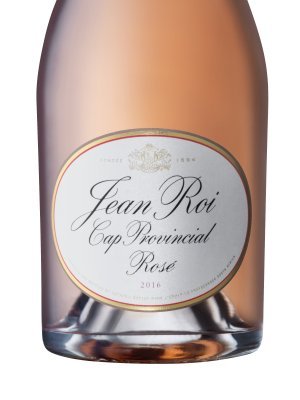Everyday
The Journeyman is the South African vinous equivalent of hen’s teeth. It is a cabernet franc-dominated blend made by Boekenhoutskloof’s Marc Kent in very small quantities and only in exceptional vintages – 2005, 2007, 2009, 2011 and 2015. And it is only the latter vintage that has been commercially released – in September of this year. To get a bottle of any of the previous vintages you had to know someone who knew someone who was close to one of Marc’s people. And to get a bottle of the 2015, you had to fork out R1 500. And stand in a queue behind the other rich people who were clamouring for their shot at one of SA’s rarest wines. Happily, the same ethos of seeking the highest quality possible is discernible throughout all the ranges of wine produced by the Boekenhoutskloof team – and at considerably less than R1 500. For 3% of that princely sum (R45 for those without calculators) you can buy a bottle of the 2017 Porcupine Ridge sauvignon blanc. Despite the difficult drought conditions, 2017 is looking like a pretty special vintage for those that managed the challenges well. This sauvignon is absolutely redolent with tropical fruit flavours. Far too often sauvignons in this price bracket have a mouth-puckering acidity. That’s not the case with the Porcupine Ridge – just enough to provide a steely backbone around which the flavours coil and curl. An utterly compelling value proposition.
Dinner Party
That wonderful rugby flanker Jan Boland Coetzee has been at the helm of Vriesenhof for nearly forty years since buying the farm in 1980. (Although the Coetzee family has been associated with land ownership in the Stellenbosch area since 1682.) And like many brands that established themselves in the 1980s, Vriesenhof has struggled to stay front of mind in a wine world that increasingly looks for innovation – for new areas and young guns, and which turns a slightly sneering eye on the establishment. Jan Boland ‘refreshed’ the range in August – doing away with the (second) Paradyskloof label and putting the seven wines now made by the farm into stylishly new and very attractive packaging. Winemaker Nicky Claasens is also making wines in a fresher, more modern style. The farm’s chardonnay has always been a winning proposition, with notable ageing potential, and the 2017 unwooded version is utterly charming – a perfect picnic or sushi wine with its marzipan and citrus bouquet and succulent palate and dry (RS 1.5g/l) minerally finish. ARP R90.
Out to Impress
Rosé wines have traditionally been something of an afterthought in the South African wine industry – not taken too seriously, not made with much care or discernment. But that is slowly changing as more producers look to offer a rosé of weight and interest. We’re still some way shy of elevating rosé to the heights it enjoys in Provence with wines like Domaines Ott and Château Pibarnon, but the trend is upwards. Anthonij Rupert Wines earlier this year launched the country’s first premium rosé, the Jean Roi Cap Provincial Rosé 2016, made from cinsault, grenache and shiraz and named for the French Huguenot from Provence who pioneered the viticultural history of L’Ormarins wines more than 300 years ago. The packaging – a “bespoke regal-style bottle” is very striking, as behoves a wine costing more than R300 a bottle, and what’s in the bottle is equally impressive. The pink blush colour moves one to poetic licence, putting this taster in mind of the colour of a just-fading sunset on Karoo mountains; the nose is of peach and spanspek melon, and the palate has a weight and acidity that is worlds removed from the cloying sweetness of most local rosés. This is a delicious aperitif wine, but it also has sufficient heft to accompany a summer delight like crayfish on a braai.






